The César à Sumeire Coussin 2020, by Famille Sumeire, was the only rosé to win a gold medal. It also won the Provence Rosé Trophy. But it’s not a typical Provençal rosé; it is “profound and opulent”, according to eighth-generation winemaker Olivier Sumeire.
Les Domaines Paul Mas Jardin de Roses 2020 was crowned IWC Great Value Champion Rosé 2021 for wines under £15.
But how are these rosés made? Canopy talks to the winemakers…
César à Sumeire Coussin 2020
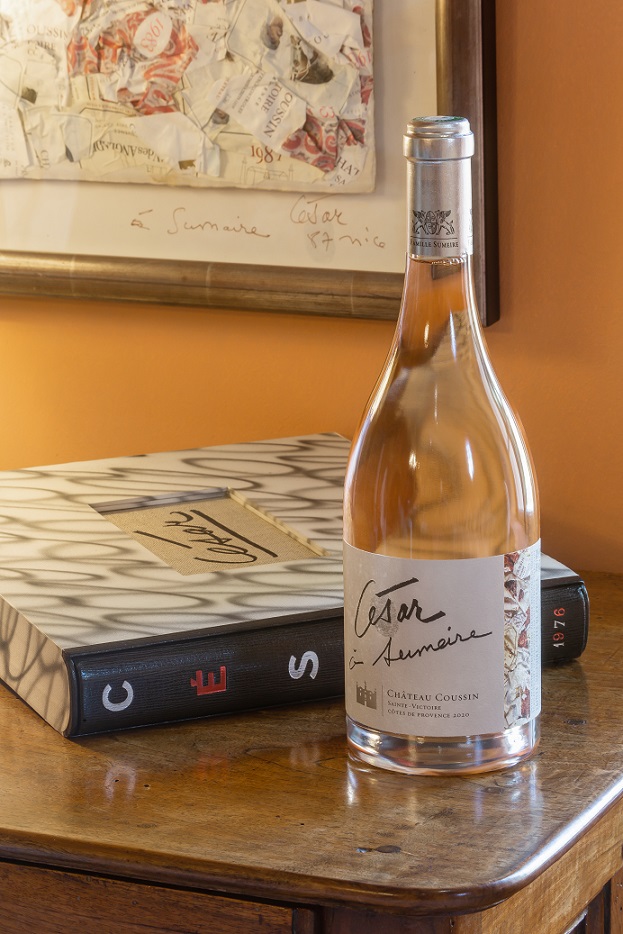
The César à Sumeire Coussin 2020, a limited production release from Château Coussin, is named after a long-time friend of the Sumeire family, French sculptor César Baldaccini (1921–1998). Already designing labels for Mouton Rothschild, César wanted to do something to help the Sumeires (and Provence), so he designed the cover for their wine boxes.
The Sumeires have also used a slice of that design as well as César’s famous thumbprint on the label of his namesake rosé. (Part of the original artwork can be glimpsed in the photo above.)
“With such a story, the wine has to be nothing but exceptional,” Sophie Sumeire Denante tells me.
Produced from old, low-yielding Grenache (70%) and Syrah (30%) vines, this pale pink rosé was described by the IWC judges as: “Really fine on the nose, with delicate citrus, cherry and strawberry confit aromas. Touch of pepper too. Dances on the palate, quietly, powerful with texture and great length.” They awarded it 95 points.
Château Coussin, now in the hands of eighth-generation winemaker Olivier Sumeire and sister Sophie (below), focuses on rosé production.
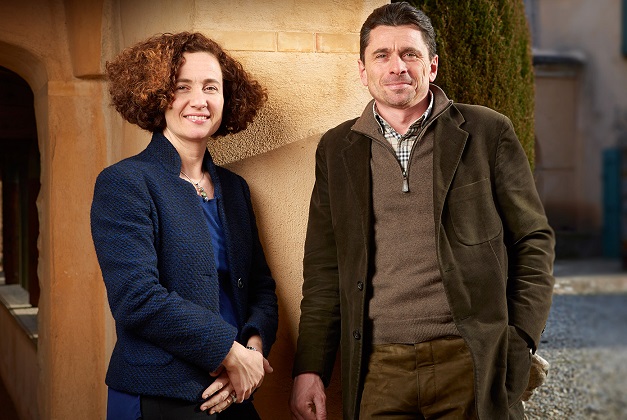
For their flagship wine, selected grapes from Château Coussin’s best parcels are destemmed, going straight into the press to reduce the contact time between the juice and the skins. But it’s “enough to extract the necessary colour,” Sophie says.
They start draining the pneumatic presses almost as soon as they are filled, separating the free-run juice and the pressed juice.
The must undergoes overnight settling at 4°C, with the lees part filtered and reincorporated with the clear juice before an 18-day-long stabulation process.
Fermentation is with commercial yeasts at 16-18°C in stainless-steel vats.
After the 10- to 15-day fermentation, the wine is lightly sulphated to protect it.
The wine undergoes tangential filtration again before blending and then electrodialysis to avoid tartaric precipitation.
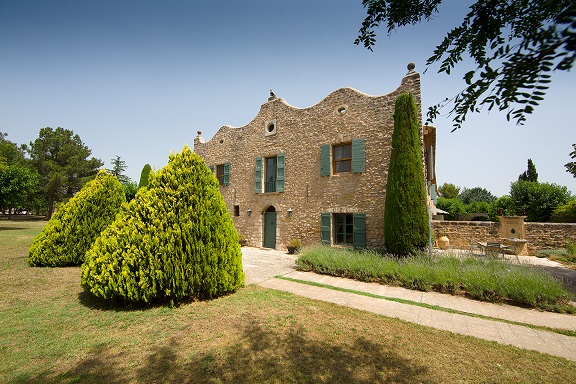
When asked about the keys to making a special rosé, Olivier replies: “The most important is the plot selection, which is a stage before the vinifications. Indeed, it is at that moment that we choose what appears as the best plots to produce the future César à Sumeire Coussin rosé wine. It means going in the selected plots, tasting the berries and doing the maturity controls, regularly.
“The day of the harvest, we blend the different selected plots together, and so the different grape varieties (usually it is a blend of Syrah and Grenache, with Cinsault sometimes).
“Concerning the colour, we protect the grapes as soon as the harvest starts, by adding some sulphur dioxide, always the minimum, in the trailers which transport the harvest, in order to limit the risk of oxidation. In addition, these plots are harvested during the night or at sunrise (the lowest temperature of the day), which limits also the extraction of colour.
“Concerning the pressing, I do a direct press, which consists of having, as much as possible, some free-run juice, and also the juice which flows at low pressures (0.5 to 0.6 bars maximum). So, there is a limited contact between the skin and the juice, and so a pale colour afterwards. Once the press is filled, we separate that pale juice – fine, subtle, delicate – from the pressed juice, after approximately 25 to 40 minutes, according to what we observe and taste. The pressed juice is vinified separately and doesn't enter in the César à Sumeire Coussin rosé wine.
“We maintain a temperature of 10°C in the tank, and we add some enzymes to help the clarification of the juice. We adjust the total SO2 level to around 50mg/L.
“We do the racking of the must the day after, the moment used to add another antioxidant (pea proteins), whose effect will be visible at an approximate density of 1060.
“The alcoholic fermentation lasts between 10 to 12 days, at 16-18°C. We will add some bentonite (to precipitate the unstable proteins), and eventually we will add some pea proteins.
“At the end of that fermentation, the tank is closed (to keep the inert gas produced during the fermentation: CO2) and we lower the temperature of the wine (to make the lees precipitate).
“At that moment, the wine is very sensitive to oxidation, so the CO2 will help to protect it.
“After approximately five days, this wine is sulphured and filtered into a full tank (so less risks of oxidation), and the level of free SO2 will be regularly checked and adjusted (to 25-30 mg/L), with some regular tastings.
“To finish, always with the idea of protecting the rosé wine (in terms of colour and tasting), the bottling is made with an inert gas (nitrogen) to limit the oxidation once more.”
'We always search for a general balance in our wines'Sophie adds: “I would say that we always search for a general balance in our wines, so that they express the richness and typicity of the very specific soil and microclimate of Côtes de Provence Sainte Victoire. Our rosés have beautiful colours, but they are much more than this, they are very ancient wines, and have a great history. The Greek historian and philosopher Plutarch, a great thinker about antique Rome, wrote in his book ‘The Life of Marius’ that the inhabitants of Marseille were cultivating vines exactly in our place already in 102BC. Our vineyards have been planted since the Greek antiquity here in Provence and this is the spirit we want to carry along the generations of winegrowers in my family.
“Thus, we could say this wine is from César to César, from antiquity to our story with the sculptor!”
Creating a Great Value rosé
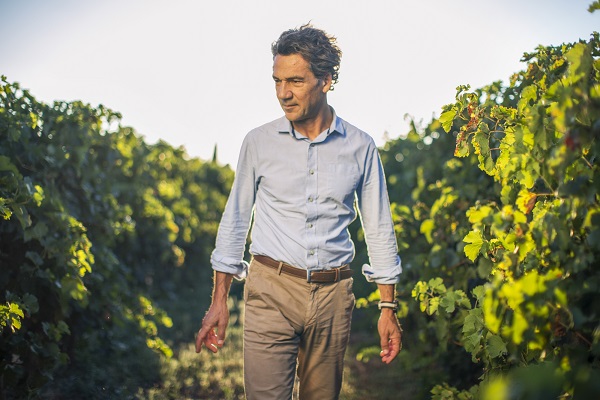
Languedoc legend Jean-Claude Mas (above) knows how to make delicious wines that are great value for consumers.
Les Domaines Paul Mas received two IWC Great Value Champion awards this year: the Jardin de Roses 2020 was named Great Value Champion Rosé and the Réserve Languedoc Blanc 2020 was named Great Value Champion White.
The challenge with Jardin de Roses is to produce an aromatic, fruity and floral rosé that comes “close to what we can smell in a rose garden”.
This pale-salmon-coloured rosé is a blend of 45% Grenache, 35% Cinsault and 20% Syrah.
The grapes, from the Paul Mas estate at Chateau Lauriga in the Roussillon, are machine-harvested when, according to Jean-Claude, “the balance between the acidity and the aromatic maturity” is right. “You have to taste the grapes and look at the analysis. The more the grape ripens and the sugars are concentrated, the more the levels of acidity drop. You need to find the right balance.”
Each variety is vinified separately. After destemming, they spend about 3.5hrs in the pneumatic press – with the free-run taken for this wine.
Fermentation with selected yeasts is at a maximum temperature of 16°C and lasts for about 3 weeks.
During the vinification, the Paul Mas team regularly racks the wines “to keep a maximum of fruit and concentration”. Jean-Claude explains: “Racking enables the wines to keep clean, avoids contact with large particles and allows the fruit aromas to develop.”
He tells me the wines are protected from oxidation at this stage by dry ice and nitrogen.
Ageing on lees takes place in 153hl and 250hl cement tanks, with stirring twice a week for three months by injecting nitrogen or CO2 in the bottom of the vats.
This wine is bottled with 24mg/L of free SO2.


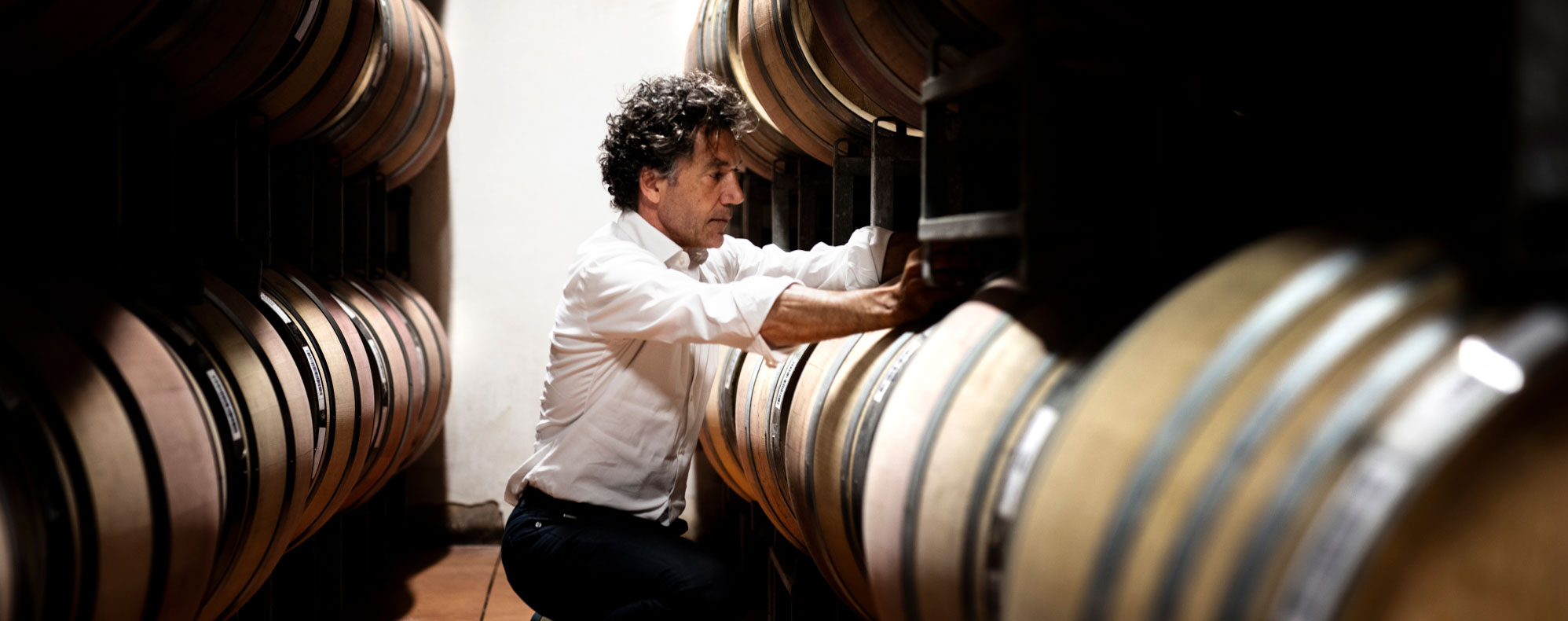










.png)






